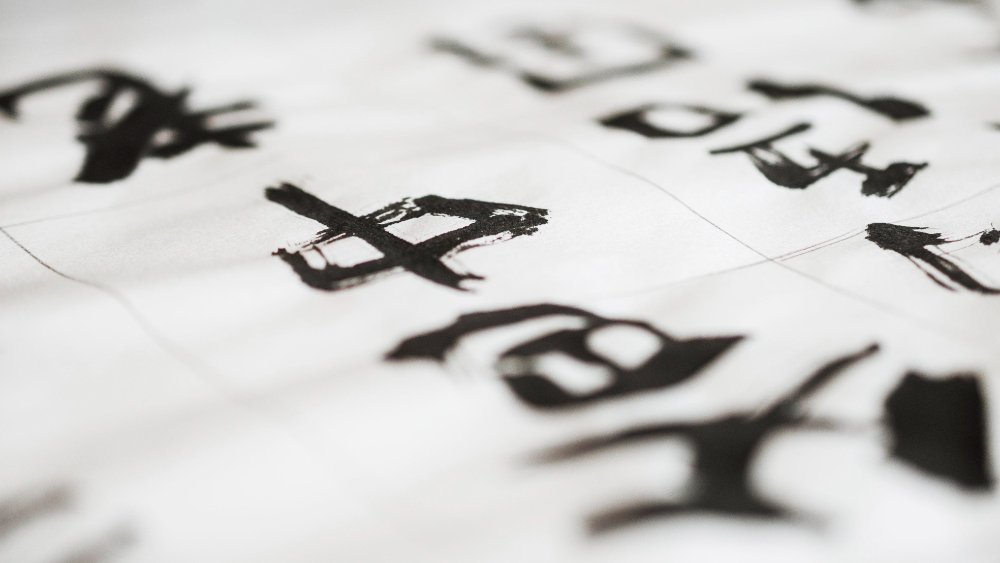
Table of Contents
For anyone learning Japanese, mastering Katakana is a crucial step in becoming fluent. While Hiragana and Kanji are the primary writing systems, Katakana holds its own significance, especially for reading and writing foreign words, names, and technical terms. Learn how to read Katakana opens the door to understanding loanwords and popular culture references, which are abundant in Japanese media, advertisements, and signage. Additionally, Katakana is often used for emphasis, much like italics in English. For learners, becoming proficient in Katakana is essential to reading effectively, understanding context, and navigating the Japanese language in everyday life.
Learn How to Read Katakana
By learn how to read Katakana, you will deepen your understanding of Japanese and expand your reading and writing capabilities.
1. What is Katakana?
Katakana is one of the three primary writing systems used in the Japanese language, alongside Hiragana and Kanji. It is a syllabic script, which means each character represents a sound or syllable rather than an individual letter or concept, like in the Latin alphabet. Katakana has a distinct angular and sharp appearance, unlike the curved strokes of Hiragana, which is often used for native Japanese words.

Purpose of Katakana
Katakana was developed primarily for the transcription of foreign words, loanwords, and names, distinguishing them from native Japanese words written in Hiragana or Kanji. It’s also used for representing onomatopoeia, technical and scientific terms, and for emphasizing words in much the same way italics are used in English. Its use is indispensable in modern Japanese, particularly in areas such as advertising, media, and product names, where foreign influences are widespread.
History of Katakana
Katakana’s origins date back to the early Heian period (794-1185 AD), when it evolved from simplified Kanji characters. Initially, it was used primarily by Buddhist monks for reading and writing Chinese texts. Over time, Katakana became more commonly used to transcribe foreign words and to represent sounds not originally in Japanese, becoming a distinct writing system in its own right.
Primary Usage of Katakana
Katakana is an essential writing system in Japanese, with distinct uses that make it a vital part of the language. If you’re serious about becoming fluent, it’s crucial to learn how to read Katakana, as it enables you to fully understand various aspects of modern Japanese.
1. Loanwords (Gairaigo)
Katakana is most commonly used for loanwords or foreign words that have been adopted into the Japanese language. As Japan interacts more with the outside world, many words from languages like English, French, and German are now part of everyday Japanese vocabulary. Examples include:
- コンピュータ (computer)
- タクシー (taxi)
- インターネット (internet)
These words, originally from other languages, are written in Katakana because they are not native Japanese terms. Understanding Katakana is essential to learn how to read Katakana, as these loanwords make up a large part of modern vocabulary.
2. Onomatopoeia
Japanese uses Katakana to represent onomatopoeia—words that mimic sounds or describe actions. These words are commonly used in literature, manga, and everyday speech. Examples include:
- ゴロゴロ (goro-goro), representing the sound of something rolling or rumbling.
- ドキドキ (doki-doki), used to describe the sound of a heartbeat, often due to excitement or nervousness.
To truly grasp Japanese expressions, learning how to read Katakana will help you recognize and interpret these expressive, sound-based words in context.
3. Foreign Names
Katakana is the writing system used for foreign names, including people and places from other countries. When writing English or other foreign names, Japanese uses Katakana to transliterate them. For example:
- アメリカ (America)
- ジョン (John)
- ロンドン (London)
This allows non-Japanese names to be properly recognized and pronounced in Japanese. If you’re looking to learn how to read Katakana, it’s essential to be able to recognize these foreign names in Japanese texts.
4. Emphasis
Katakana can also be used to emphasize certain words, much like how italics are used in English. For instance, in advertisements, media, and informal texts, Katakana may be used to highlight key terms, product names, or certain phrases. For example:
- 新商品 (new product) could be written as 新商品 in Kanji but emphasized with Katakana for extra attention.
By mastering how to read Katakana, you’ll be able to identify these highlighted words that are important in various contexts, including advertisements and media.
2. The Complete Katakana Chart & Pronunciation Guide
Learning how to read and pronounce Katakana is a crucial part of mastering the Japanese writing system. Katakana consists of 46 basic characters, each representing a distinct syllable. Below is a detailed Katakana chart along with pronunciation guides to help you learn how to read Katakana effectively.
Basic Katakana Chart
| Row \ Column | A | I | U | E | O |
| K | カ (ka) | キ (ki) | ク (ku) | ケ (ke) | コ (ko) |
| S | サ (sa) | シ (shi) | ス (su) | セ (se) | ソ (so) |
| T | タ (ta) | チ (chi) | ツ (tsu) | テ (te) | ト (to) |
| N | ナ (na) | ニ (ni) | ヌ (nu) | ネ (ne) | ノ (no) |
| H | ハ (ha) | ヒ (hi) | フ (fu) | ヘ (he) | ホ (ho) |
| M | マ (ma) | ミ (mi) | ム (mu) | メ (me) | モ (mo) |
| Y | ヤ (ya) | ユ (yu) | ヨ (yo) | — | — |
| R | ラ (ra) | リ (ri) | ル (ru) | レ (re) | ロ (ro) |
| W | ワ (wa) | — | — | ヲ (wo) | — |
| N | ン (n) | — | — | — | — |
Additional Sounds (Dakuten and Handakuten)
Some Katakana characters can have a dakuten ( ゛) or handakuten ( ゜) added to change the pronunciation.
| Base Character | Dakuten | Handakuten |
| K (カ) | ガ (ga) | — |
| S (サ) | ザ (za) | — |
| T (タ) | ダ (da) | — |
| H (ハ) | バ (ba) | パ (pa) |
| — | — | ピ (pi) |
How to Pronounce Katakana
- A, I, U, E, O: These vowels are pronounced like their counterparts in most languages:
- A = “ah”
- I = “ee”
- U = “oo” (as in “food”)
- E = “eh”
- O = “oh”
- K, S, T, N, H, M, Y, R, W: These consonants are pronounced similarly to their English counterparts:
- K sounds like the “k” in “kite”
- S sounds like the “s” in “sun”
- T sounds like the “t” in “top”
- N sounds like the “n” in “net”
- H sounds like the “h” in “hat”
- M sounds like the “m” in “man”
- Y sounds like the “y” in “yes”
- R sounds like a mixture of “r” and “l” in “run”
- W sounds like the “w” in “water”
- Dakuten Characters: The dakuten symbol ( ゛) changes the sound slightly:
- K to G (e.g., カ (ka) → ガ (ga))
- S to Z (e.g., サ (sa) → ザ (za))
- T to D (e.g., タ (ta) → ダ (da))
- H to B or P (e.g., ハ (ha) → バ (ba) or パ (pa))
Mastering Katakana Pronunciation
To learn how to read Katakana fluently, it’s important to practice both reading and pronunciation. Here’s how:
- Start with basic characters: Learn the basic sounds and their corresponding characters.
- Practice writing Katakana: Writing the characters by hand helps reinforce memory and understanding of the shape.
- Use flashcards: Flashcards can help you test both your reading and pronunciation skills.
- Listen to native speakers: By listening to native Japanese media, you can understand how the Katakana characters sound in real-life situations.
Mastering Katakana will open up your ability to read many aspects of modern Japanese, including foreign names, new technology, and cultural references. Learn how to read Katakana not only helps you understand the language but also enhances your overall experience as a Japanese learner.

4. Memory Hacks to Learn Katakana Quickly
Learning Katakana can seem challenging at first, but with the right strategies, you can master it in no time. Here are some effective memory hacks to help you learn how to read Katakana quickly:
- Group Similar Characters: Break down the Katakana characters into smaller groups based on their shapes and sounds. For example, the K row (カ, キ, ク, ケ, コ) shares a similar pattern, making it easier to remember. Grouping similar characters helps reduce cognitive load.
- Use Mnemonics: Create simple stories or associations for each Katakana character. For example, the character カ (ka) looks like a “kettle,” which can remind you of the “ka” sound. These fun and visual associations can make the characters stick in your memory.
- Practice with Flashcards: Flashcards are a great way to reinforce both reading and pronunciation. You can use apps or physical cards to regularly test your memory. Write the Katakana on one side and the pronunciation on the other.
- Practice Writing: Writing the characters repeatedly helps reinforce your muscle memory. Practice writing each character slowly and correctly to build lasting familiarity.
- Spaced Repetition: Use spaced repetition software (SRS) or apps like Anki to review Katakana at increasing intervals. This technique helps you retain the information long-term.
With consistent practice and these memory hacks, you’ll learn how to read Katakana effectively and quickly!
5. Best Practice Methods to Master Katakana
Mastering Katakana requires consistent practice and strategic approaches. Here are some of the best methods to help you learn how to read Katakana effectively:
- Start with the Basics: Begin by learning the 46 basic Katakana characters. Focus on small groups of characters at a time, like the vowels (ア, イ, ウ, エ, オ) or consonant sounds (カ, キ, ク, ケ, コ). Don’t rush—getting a solid foundation is key.
- Write Daily: Repetition is crucial for learning Katakana. Write the characters by hand each day. This strengthens muscle memory and helps you remember the shape of each character. Focus on proper stroke order as well.
- Use Flashcards: Create flashcards with Katakana characters on one side and the pronunciation on the other. Use them to quiz yourself regularly. Digital flashcard apps like Anki or Quizlet can be especially useful with their spaced repetition systems.
- Label Items Around You: Label common items in your house or workspace using Katakana. For example, write テレビ (terebi) on your TV, or コンピュータ (konpyu-ta) on your computer. This immersion technique helps you associate the symbols with real-world objects.
- Practice with Katakana Words: Learn and practice writing common Katakana words, especially loanwords (like タクシー for taxi or パソコン for computer). This makes learning more practical and helps you quickly see Katakana in everyday use.
- Take Online Quizzes and Tests: Test your knowledge with online quizzes and games that focus on Katakana recognition and pronunciation. These interactive exercises can help reinforce your learning and keep you engaged.
- Consistency Over Intensity: Practice a little each day rather than cramming all at once. Consistency is more effective in building long-term retention.
By following these best practices, you’ll quickly learn how to read Katakana, improve your reading skills, and feel more confident with your Japanese writing journey.
6. Common Katakana Words You Should Know
Here are 15 common Katakana words to help you learn how to read Katakana more effectively:
- コンピュータ (konpyu-ta) – Computer
This word is derived from English, and is commonly used in daily conversations when referring to computers. - テレビ (terebi) – Television
Another loanword from English, it’s essential to know when talking about TV or media in Japan. - タクシー (takushi) – Taxi
The Japanese word for taxi, widely used when discussing transportation. - レストラン (resutoran) – Restaurant
Used to describe dining establishments, whether they are casual or more formal. - カメラ (kamera) – Camera
Used frequently, especially in conversations related to photography and technology. - スマホ (sumaho) – Smartphone
A popular abbreviation of スマートフォン (smartphone), it’s a part of everyday life in Japan. - ホテル (hoteru) – Hotel
Commonly used when booking accommodations or talking about places to stay. - ビール (bi-ru) – Beer
A very useful word when talking about drinks, especially in social settings. - パソコン (pasokon) – Personal computer
A common word for a personal computer, especially in the context of home or office use. - バス (basu) – Bus
Important for anyone navigating public transportation in Japan. - メニュー (menyu) – Menu
Used in restaurants and cafes, this is essential when ordering food. - アイスクリーム (aisu kuri-mu) – Ice cream
A universal favorite, especially in warmer weather. - マクドナルド (Makudonarudo) – McDonald’s
The popular fast food chain’s name written in Katakana. - サンドイッチ (sandoicchi) – Sandwich
A widely recognized food item, useful in both daily and travel-related conversations. - コーヒー (ko-hi-) – Coffee
A popular beverage word, often seen in cafes or restaurants.
These common Katakana words often appear in daily conversations, and practicing them will help you learn how to read Katakana faster. Many of these words are borrowed from English or other languages, making them easier to remember and useful for language learners.

7. Recommended Resources for Katakana Learning
Learning Katakana can be both fun and effective with the right resources. Here are some recommended tools and methods to help you learn how to read Katakana and master this essential part of the Japanese writing system:
- Anki (Spaced Repetition System)
Anki is a powerful flashcard app that uses spaced repetition to help you retain Katakana characters. There are many pre-made decks available specifically for Katakana practice, allowing you to review them regularly. - WaniKani
WaniKani is a popular app for learning kanji and Kana (including Katakana). It uses mnemonics and spaced repetition to help you remember Katakana characters. It’s especially useful for beginners who want a structured and interactive approach to learning. - Katakana Charts (Printable)
Websites like JapanesePod101 and Tofugu provide printable Katakana charts that you can use for quick reference. These charts also often include example words to practice. - Genki Textbook
The Genki series is a well-known resource for learning Japanese. It includes Katakana charts and exercises specifically designed for beginners, with a focus on practical usage and daily vocabulary. - LingoDeer
LingoDeer is an interactive language app that’s perfect for beginners. It offers structured lessons on Katakana with clear explanations and practice exercises.
By utilizing these resources, you’ll be able to learn how to read Katakana more efficiently and effectively, making your journey toward Japanese fluency smoother!
FAQs About Learning Katakana
- What is Katakana?
Katakana is a script used for foreign words, onomatopoeia, and names. It’s essential for understanding modern Japanese. - How long to learn Katakana?
Most learners can grasp Katakana basics in a few weeks with regular practice. - How to remember Katakana?
Use flashcards, mnemonics, and writing practice to reinforce memory. - Can Katakana be used for native words?
No, it’s mainly for foreign words, borrowed terms, and onomatopoeia. - Is Katakana harder than Hiragana?
Katakana can seem harder at first but is equally manageable with practice.
Summary
To learn how to read Katakana effectively, it’s essential to use a variety of resources that cater to different learning styles. Flashcards, spaced repetition apps, and interactive language apps can enhance your memorization and reading practice. Additionally, textbooks and workbooks provide structured lessons and writing exercises. Engaging with Katakana through real-world examples, such as common loanwords and daily vocabulary, helps reinforce learning. Consistent practice, combined with resources that include pronunciation guides, quizzes, and games, will accelerate your progress. Mastering Katakana is a crucial step in your Japanese learning journey, enabling you to read and understand more of the language.
Learn how to read Katakana. Master it effortlessly—read more for details!
